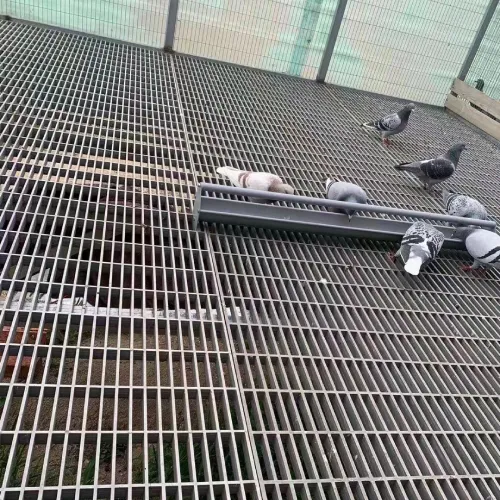loading...
- No. 9, Xingyuan South Street, Dongwaihuan Road, Zaoqiang County, Hengshui, Hebei, China
- admin@zjcomposites.com
- +86 15097380338
- Welcome to visit our website!
frp louvers for cooling tower
FRP Louvers for Cooling Towers An Overview
Cooling towers are essential components in various industrial processes, providing efficient heat dissipation and improving energy efficiency. Among their many critical elements, louvers play a significant role in optimizing airflow and enhancing performance. The use of Fiberglass Reinforced Plastic (FRP) louvers has gained popularity in recent years due to their numerous advantages, including durability, efficiency, and low maintenance. This article explores the characteristics and benefits of FRP louvers in cooling towers.
Understanding FRP Louvers
FRP louvers are made from a composite material that combines glass fibers with a polymer resin. This combination results in a lightweight yet strong structure that is resistant to corrosion, UV radiation, and various environmental conditions. Unlike traditional materials such as metal or wood, FRP does not rust, rot, or degrade over time, making it an ideal choice for cooling tower applications.
The design of FRP louvers facilitates the efficient flow of air while minimizing water loss. Their aerodynamic shape enhances the natural cooling process, allowing the cooling tower to operate effectively with reduced energy consumption. These properties make FRP louvers an innovative solution for modern cooling systems.
Advantages of FRP Louvers
1. Corrosion Resistance One of the most significant advantages of FRP louvers is their resistance to corrosion. Cooling towers are often exposed to harsh chemicals and moisture, which can cause traditional materials to deteriorate quickly. FRP's ability to withstand these conditions ensures a longer lifespan and reduces the need for frequent replacements.
2. Lightweight and Easy Installation FRP materials are considerably lighter than metal options, making installation more manageable and less labor-intensive. This characteristic can lead to reduced construction costs and shortened project timelines.
frp louvers for cooling tower

3. Energy Efficiency The efficient design of FRP louvers significantly impacts the cooling tower’s overall efficiency. By optimizing the airflow, these louvers help maintain the desired temperature while minimizing energy consumption. This not only leads to cost savings but also contributes to environmental sustainability.
4. Low Maintenance With their durable construction, FRP louvers require minimal maintenance compared to traditional materials. They do not need repainting, and their smooth surface is easier to clean, allowing for consistent performance without the need for extensive upkeep.
5. Customizability FRP louvers can be designed and customized to meet specific requirements of different cooling tower applications. Their versatility allows manufacturers to create louvers of various sizes, shapes, and colors to match the aesthetic and operational needs of a facility.
Applications in Cooling Towers
FRP louvers are suitable for a wide range of cooling tower types, including induced draft, forced draft, and crossflow configurations. Their application extends across various industries, such as power generation, HVAC, chemical processing, and water treatment. By integrating FRP louvers into their cooling towers, businesses can enhance performance efficiency, thereby reducing operational costs and improving overall effectiveness.
Conclusion
The adoption of FRP louvers in cooling towers represents a significant advancement in cooling technology. With their exceptional durability, efficiency, and low maintenance needs, FRP louvers offer a reliable solution for modern cooling applications. As industries increasingly prioritize sustainability and efficiency, the demand for innovative materials like FRP will continue to grow, making it a key component in the future of cooling tower designs. Embracing this technology not only leads to enhanced operational performance but also supports broader environmental goals by reducing energy consumption and waste.
-
GRP Structures: The Future of Lightweight, High-Performance EngineeringNewsJun.20,2025
-
FRP Water Tank: High-Performance Storage for Corrosive and Clean Water SystemsNewsJun.20,2025
-
FRP Square Tube: The New Industry Standard for Chemical and Structural ApplicationsNewsJun.20,2025
-
FRP Pultruded Profiles: The Ultimate Choice for Lightweight Structural StrengthNewsJun.20,2025
-
FRP Handrails: The Safer, Smarter, and Stronger Choice for Modern InfrastructureNewsJun.20,2025
-
FRP Grating: The Smart Solution for Durable, Lightweight Industrial FlooringNewsJun.20,2025
-
Why Choose a Galvanized Water Tank for Your Storage NeedsNewsMay.21,2025
